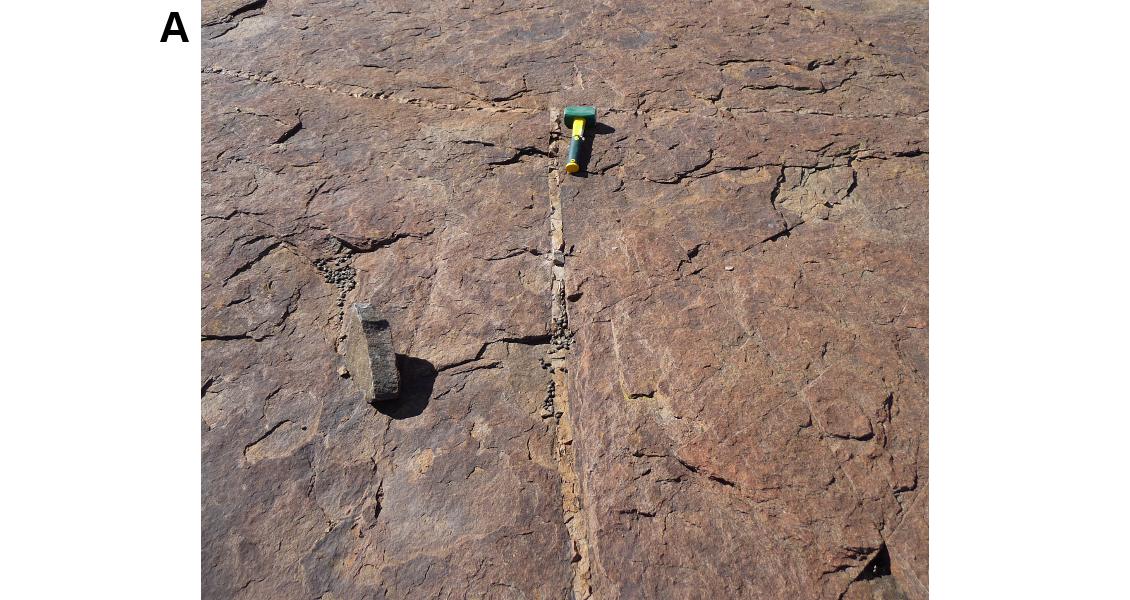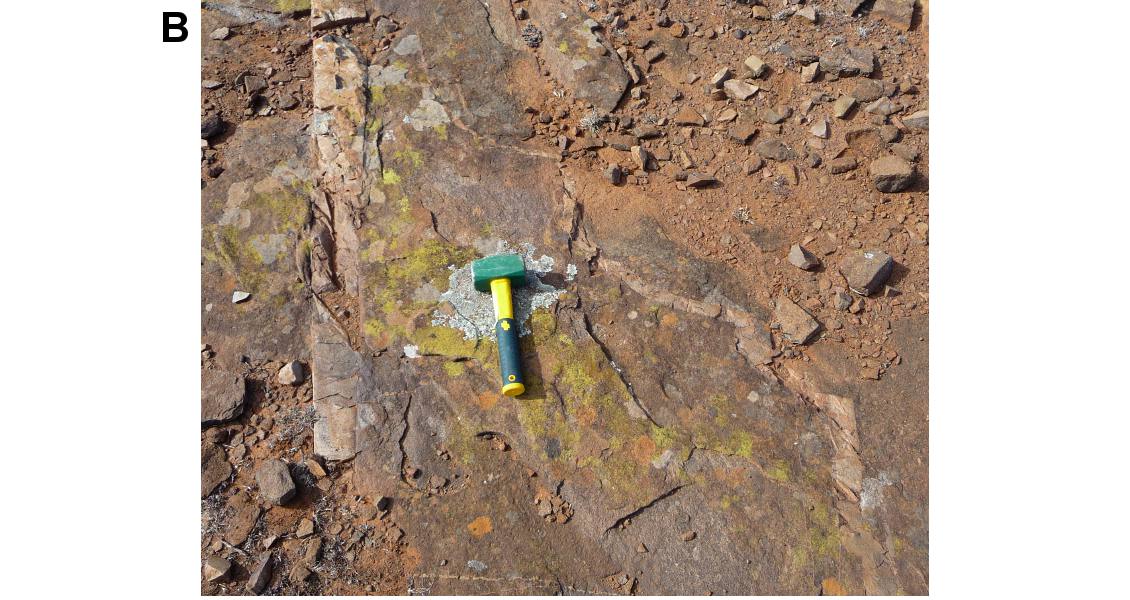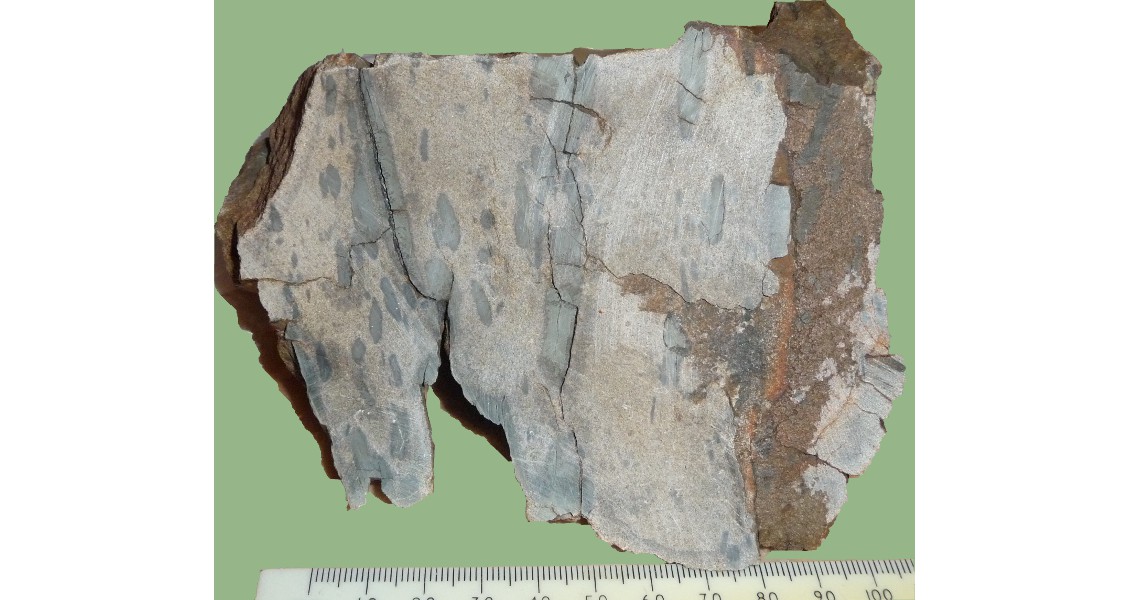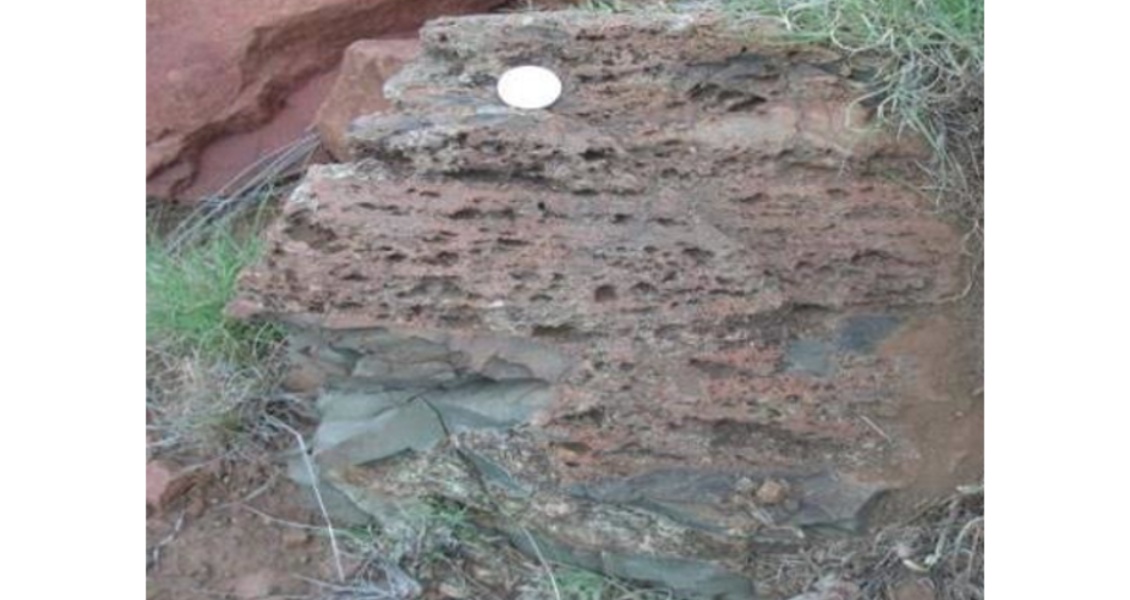‘South Africa’ and ‘energy giant’ are words infrequently strung together, as the country has almost no conventional onshore or offshore hydrocarbons of note. However, over the past couple of years the discussion over the speculated vast amounts of cheap energy situated in the Karoo Basin has reached boiling point. Potential estimates of the shale gas resource vary drastically from the original 390 Tcfg, proposed in 2013 by the US Energy Information Administration, reaching as high as 480 Tcfg by the Department of Natural Resources (South Africa), and back down to far more conservative estimates. What is certain is that the Permo-Carboniferous Whitehill, Prince Albert and Collingham black shale formations could potentially be the answer to South Africa’s current and future energy needs.
These gas-rich shales are overlain by sedimentary rocks of the Beaufort Group, which are heavily intruded by large volumes of the Karoo Dolerite Suite – a complex series of dolerite sills, dykes and ring-structures. The structural geology and hydrogeology associated with the Karoo Dolerite Suite is virtually unknown, with groundwater believed to be restricted to openings including fractures, faults and intrusive body margins.
Fractures are the most common structural feature in igneous rock, often related to emplacement and subsequent cooling and contraction. Subsurface fractures pose significant challenges to exploration and production given their considerable variations in origin, geometry and rock properties. In recent years, fracturing has become increasingly important to the petroleum industry as open fractures provide the essential (secondary) permeability for fluid flow through reservoirs. Thus far no research has investigated whether the sills themselves could provide migration pathways to fluids, but this could hold crucial insights into potential hydraulic fracturing operations. Our research (see ‘About the Author’ below for more details) focused on investigating flow patterns of the Golden Valley Sill, located in the southeastern Karoo Basin, near Tarkastad, Eastern Cape Province using Anisotropy of Magnetic Susceptibility (AMS).
The Golden Valley Sill: Fracking Potential?
During petroleum operations, geologists will often distinguish between naturally occurring (i.e. natural) fractures and those occurring as a result of fluid injection (i.e. hydraulic). Although naturally forming fractures are found in all types of igneous mediums, it is a gross oversimplification to group them all under the umbrella term of ‘natural fractures’ and even to suggest they all form in a similar manner. Hydraulic fractures, on the other hand, are formed through fracture stimulation via the injection of fluid under several thousand pounds of pressure to artificially create a network of micro fractures or fissures in the host rock. Despite there being many different forms of natural and hydraulic fractures, all of which form during entirely different processes, they have one thing in common – they create (secondary) porosity in impermeable strata which enables the migration of natural gas from the reservoir rock to the wellbore.
Like all igneous bodies, the Golden Valley Sill (GVS) is characterised by vast quantities of columnar cooling joints which formed post-emplacement and represent the cooling and shrinking of the lava body. In our research a minor disconcordant dolerite dyke was observed to cut through the roof sill of the GVS in the north-east sector. Composed of microcrystalline dolerite, indicative of rapid cooling, the dyke has dimensions between 5 and 15 cm in width and is laterally concordant for 50m. The dyke was visibly observed to exploit a series of fractures of varying diameters and lengths from a centimetre scale to tens of metres, all radiating away from the dyke, implying that the roof sill of the GVS had cooled and brittle structures such as cooling joints had formed before the dyke intrusion. The occurrence of fracture exploitation by fluidised material highlights the ability of fluids in the area to readily exploit available fractures and shows that fluids can successfully (if not necessarily efficiently) migrate through the sill.
If viscous lava-type fluids can readily exploit pre-existing fracture patterns it implies that less dense fluids, including hydrocarbons and water, would act in a similar fashion and secondary intrusion events exploiting fractures and joints could act as an analogue for the fate of fluids during potential fracking operations. Often a single analogue is insufficient to truly benchmark such a complex process; however, it is clear that should fracking operations commence in the Karoo Basin fluids would not be solely restricted to the margins of intrusive bodies, including sills. Sills have been observed to effectively conduct fluids and therefore must be incorporated into drilling and reservoir models as not only would fluids be lost into the sill itself, they might also be able to migrate through the entire sill complex.
The Fate of Pore Fluids
The vast majority of rocks in the world’s basins contain pore fluid, which is controlled by porosity and permeability and in turn controls the ease with which fluids can flow through strata. Fracking aims to vastly enhance local permeability through the creation of a series of dense local fractures. The formation and propagation of hydraulic fractures are principally controlled by a complex interplay involving stress, the mechanical strength of the rock, any pre-existing fractures and the pore fluid pressure; therefore, the fate of pore fluids is amongst the most important concepts during hydraulic fracturing. Very little is known about how the intrusion of the Karoo Dolerite Suite affects the pore fluids in the surrounding local Katberg (arenaceous) and Burgersdorp (argillaceous) deposits.
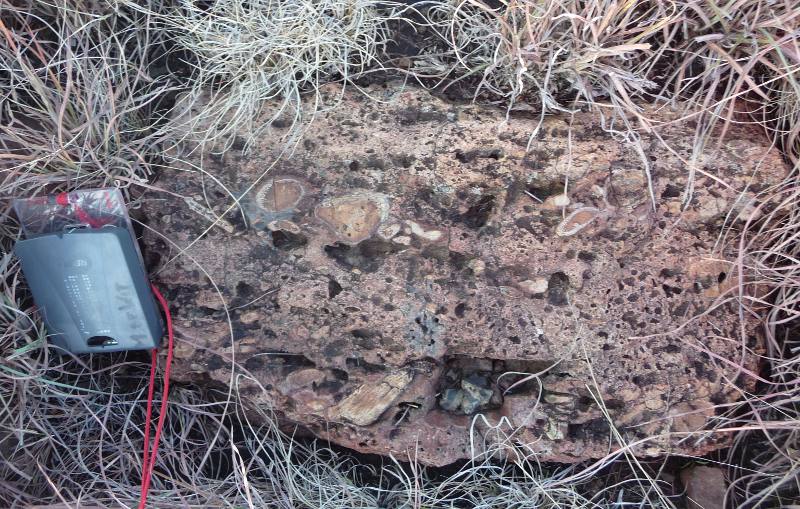 Incorporation of fragments of the Katberg facies in country rock. (Source: James Mullins)Our research provides several insights into the fate of local pore fluids at the GVS margins. Numerous boulder-sized specimens in the north-eastern sector of the sill demonstrate elongated gas cavities and frequent calcite infilling. The figure opposite is particularly interesting as there is clear evidence of the incorporation of Katberg deposits with a baked outer shell above a medium-grained sand matrix. Further hand specimens are characterised by significant percentages of mud clasts (20–30%) with metamorphic halos incorporated in a medium-grained sand matrix. Under the microscope there is evidence of disaggregation of some mud clasts and the inclusion of arenatic fragments in the middle of mud clasts, which suggests that a highly volatile mixing has occurred and highlights the possibility for rock formation via a volatile hydrothermal flow. Fibrous strong birefringence minerals observed in veins that bisect the middle of mud clasts are interpreted to represent hydromuscovite or hydromica hydrothermal sheet silicates formed during the breakdown of feldspar under late hydrothermal conditions. The incorporation of mud clasts and disaggregated quartz grains has been interpreted as high temperature metamorphosis and subsequent rapid recrystallisation. These findings support refluidisation of host rock at the sill margins and at the interface between the GVS and the country rock.
Incorporation of fragments of the Katberg facies in country rock. (Source: James Mullins)Our research provides several insights into the fate of local pore fluids at the GVS margins. Numerous boulder-sized specimens in the north-eastern sector of the sill demonstrate elongated gas cavities and frequent calcite infilling. The figure opposite is particularly interesting as there is clear evidence of the incorporation of Katberg deposits with a baked outer shell above a medium-grained sand matrix. Further hand specimens are characterised by significant percentages of mud clasts (20–30%) with metamorphic halos incorporated in a medium-grained sand matrix. Under the microscope there is evidence of disaggregation of some mud clasts and the inclusion of arenatic fragments in the middle of mud clasts, which suggests that a highly volatile mixing has occurred and highlights the possibility for rock formation via a volatile hydrothermal flow. Fibrous strong birefringence minerals observed in veins that bisect the middle of mud clasts are interpreted to represent hydromuscovite or hydromica hydrothermal sheet silicates formed during the breakdown of feldspar under late hydrothermal conditions. The incorporation of mud clasts and disaggregated quartz grains has been interpreted as high temperature metamorphosis and subsequent rapid recrystallisation. These findings support refluidisation of host rock at the sill margins and at the interface between the GVS and the country rock.
Refluidisation and recrystallisation of host rock has a major implication for fracking. Firstly, during the emplacement of the GVS, fluidisation was initiated during the release of over-pressured pore fluids, allowing the phase change between a liquid and vapour phase. This caused the breakdown of the mechanical strength of the sedimentary matrix, enabling the host rock to become fluidised. Subsequent recrystallisation of the host rock creates a completely different rock type with completely different porosity, permeability and mechanical properties from the original medium. Therefore the original local in-situ stress, mechanical strength and pore fluid pressure properties for the formation and propagation of hydraulic fractures no longer hold for the new recrystallised medium and therefore must be accounted for during reservoir modelling.
These findings highlight the inherent risk with associating standardised porosity and permeability properties with a specific rock type during modelling, as it is clear that a different rock type derived from the country rock has been formed during the sill emplacement process.
Industry Implications
Insights from the Golden Valley Sill have highlighted several issues of importance for potential fracking operations. Fluids have been observed to effectively migrate through preexisting fractures and joints in the GVS which could lead to substantial loss of injected fluid, requiring significantly increased volumes of fracking fluids, which is further complicated by the Karoo’s arid climate and low average rainfall of 200–400 mm per annum.
In addition, fluids could migrate through the entire sill complex and therefore must be incorporated into subsurface risk analysis and fracture pathway modelling.
Fluidisation and subsequent recrystallisation of charged suspended sediment has been shown to create new rock mediums derived from the host rocks present near the sill margins. This new material will have different inherent properties which will control its ability to conduct fluids and allow the formation and propagation of hydraulic fractures and therefore cannot be modelled with the same standardised porosity and permeability properties of its parent lithologies.
Modelling of the subsurface, particularly fracture patterns and flow pathways, has always posed a significant challenge to the petroleum industry. It is evident that the Karoo Dolerite Suite presents several problematic issues to the recovery of shale gas should fracking licences be granted in South Africa. Perhaps the more complex geology of the African and European continents in relation to the US Marellus and Eagle Ford shale plays have impacted on the slow growth and uncertainty revolving around shale gas and hydraulic fracturing in Africa and Europe.



